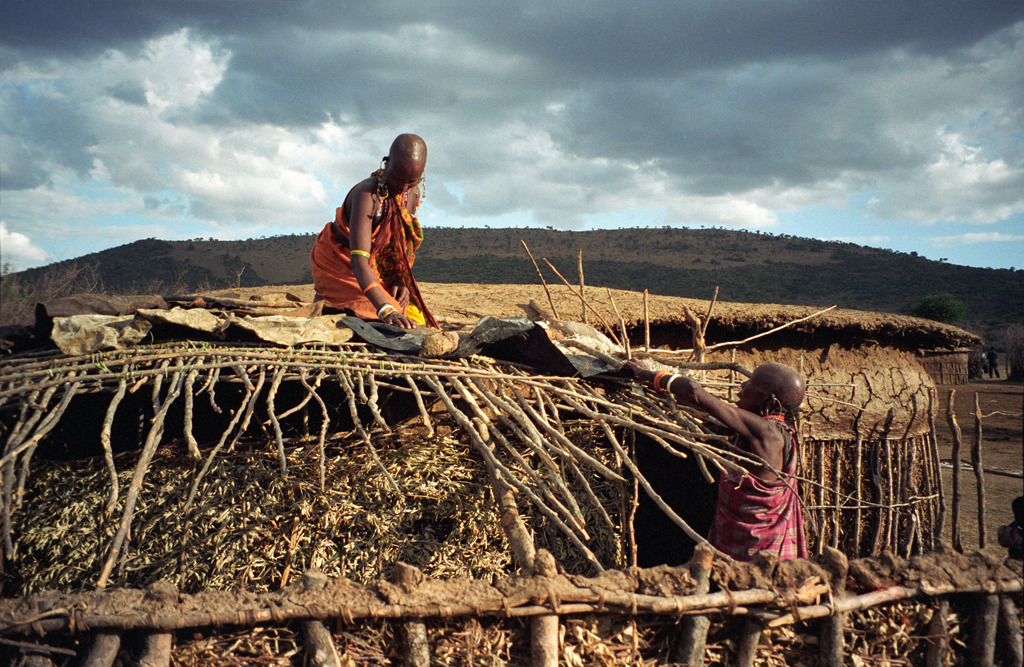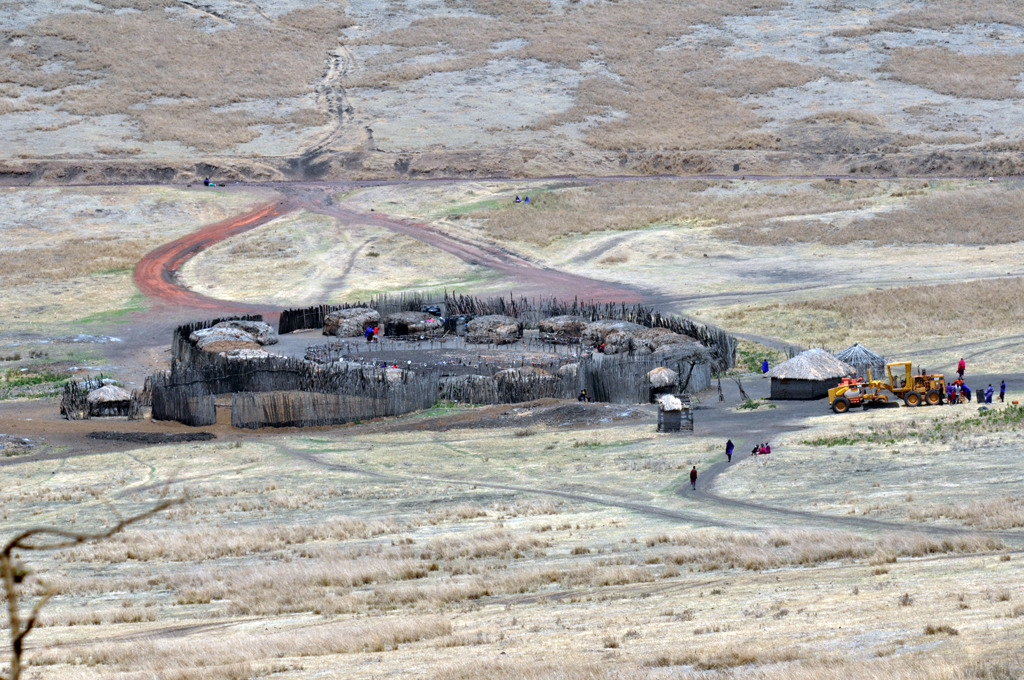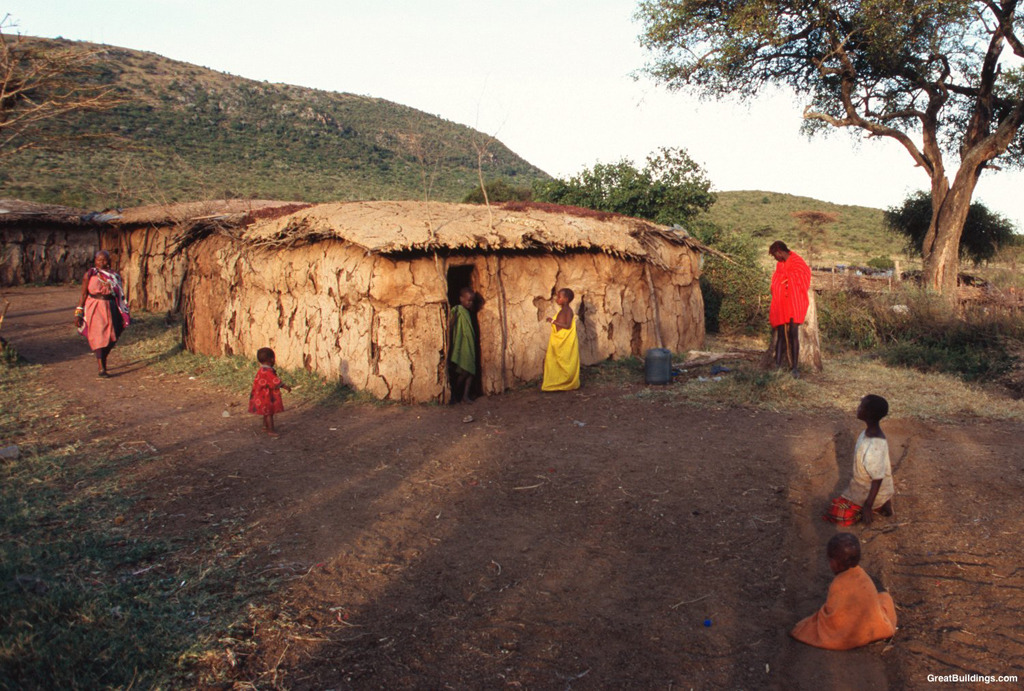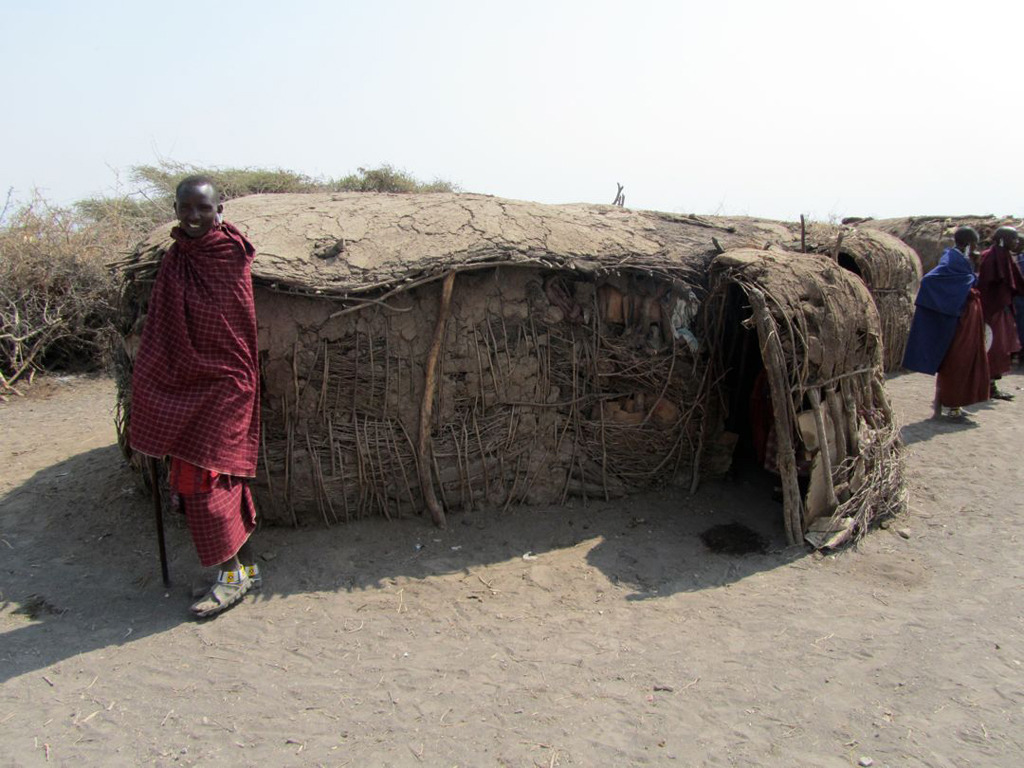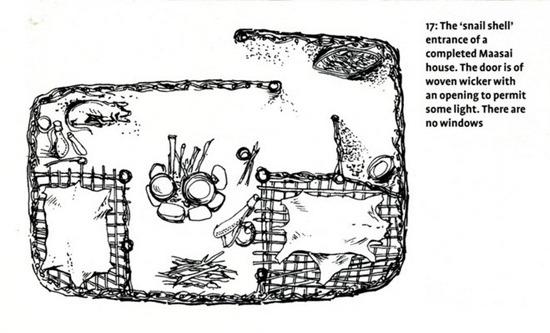V 20 |
Maasai hut |
type |
|
place |
|
population |
he Maasai pursue a semi-nomadic pastoralist lifestyle, wandering with the seasons and building new villages for themselves wherever they go. Each village is typically inhabited by one extended family. A pen is built for the animals in the centre of the settlement and this is encircled by irregular shaped small shacks. The task of the Maasai warriors (i.e. the adult men) is to defend the village against lions and other large predators, and against enemy tribes. It is also their job to build a palisade of thorny acacia stakes around the village.
The huts are built by the women for their close families. The one and a half metre high wooden framed huts have a floor plan of approximately 3×5 metres. The spaces in the walls are filled with a mixture of mud, grass, ash, twigs and cow dung. Despite their small sizes the huts house almost all the daily activities, cooking, eating, sleeping (together with the younger animals!), storing valuables and receiving guests.
In recent decades the political leadership of Kenya and Tanzania have caused much damage to the Maasai culture. Their lands have been privatized, restricting their freedom of movement and access to grazing lands, water supplies and salt. Laws regulate the sizes of their herds, making the Maasai, who had been largely self-sufficient on a diet of milk and meat, ever more dependent on the neighbouring agricultural peoples.
